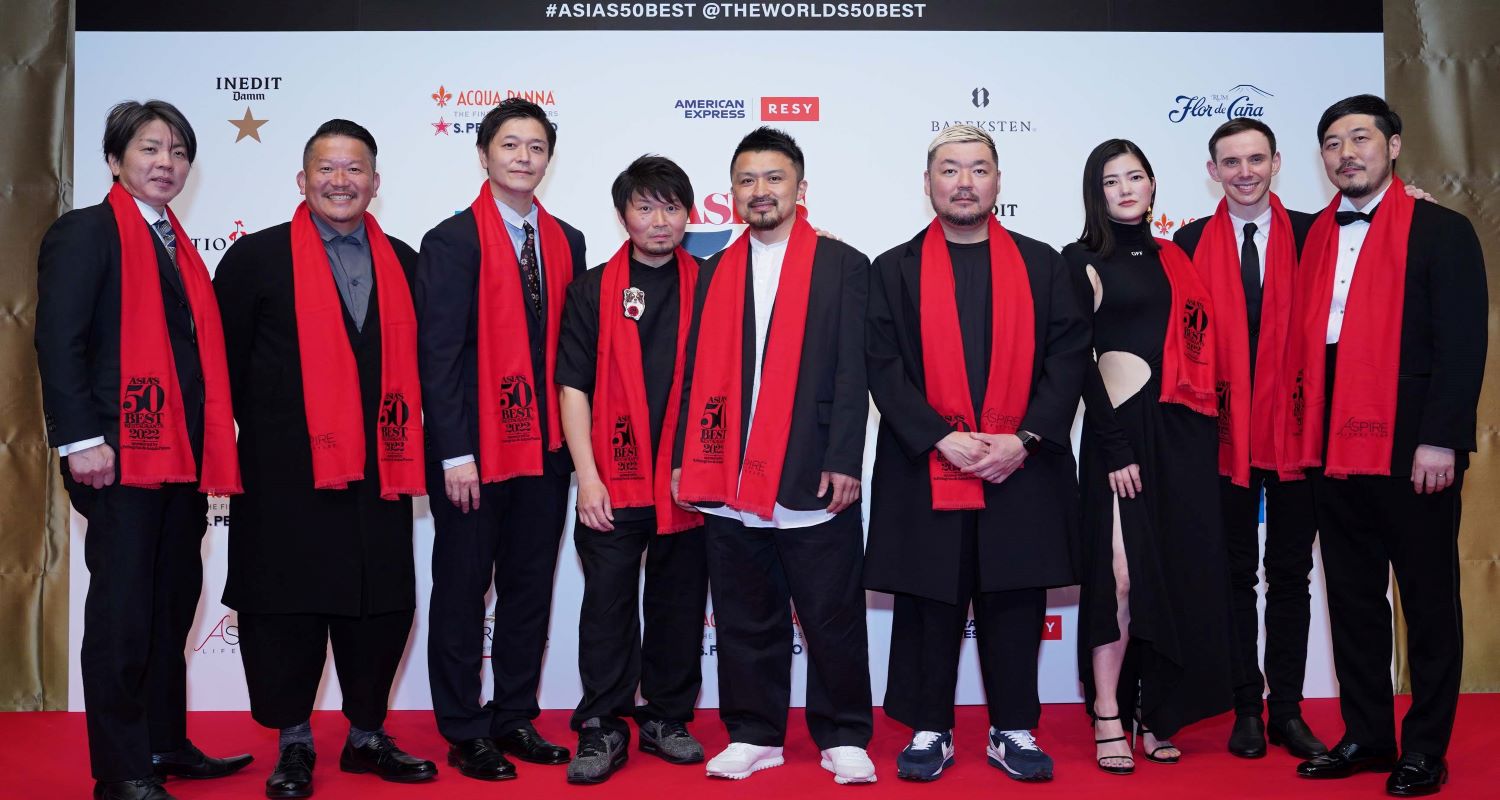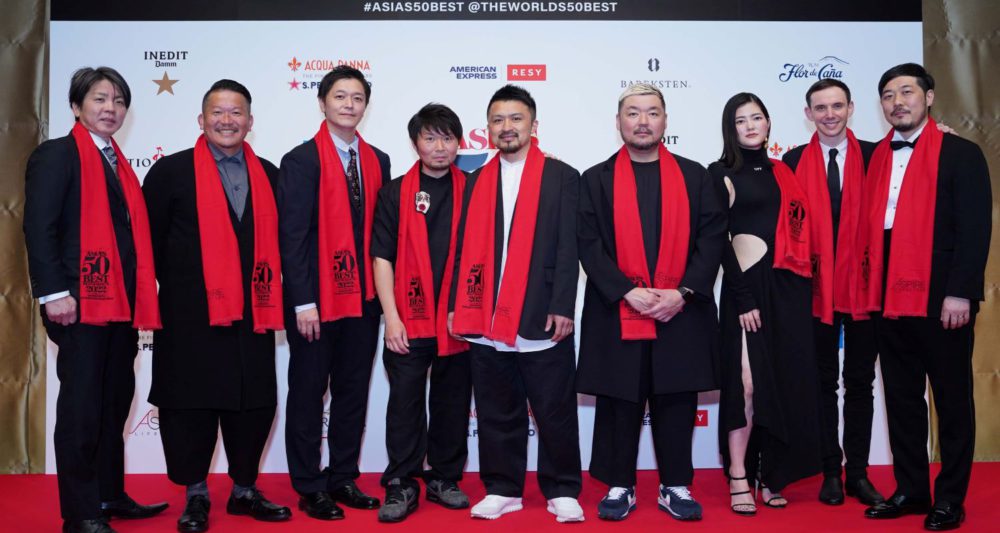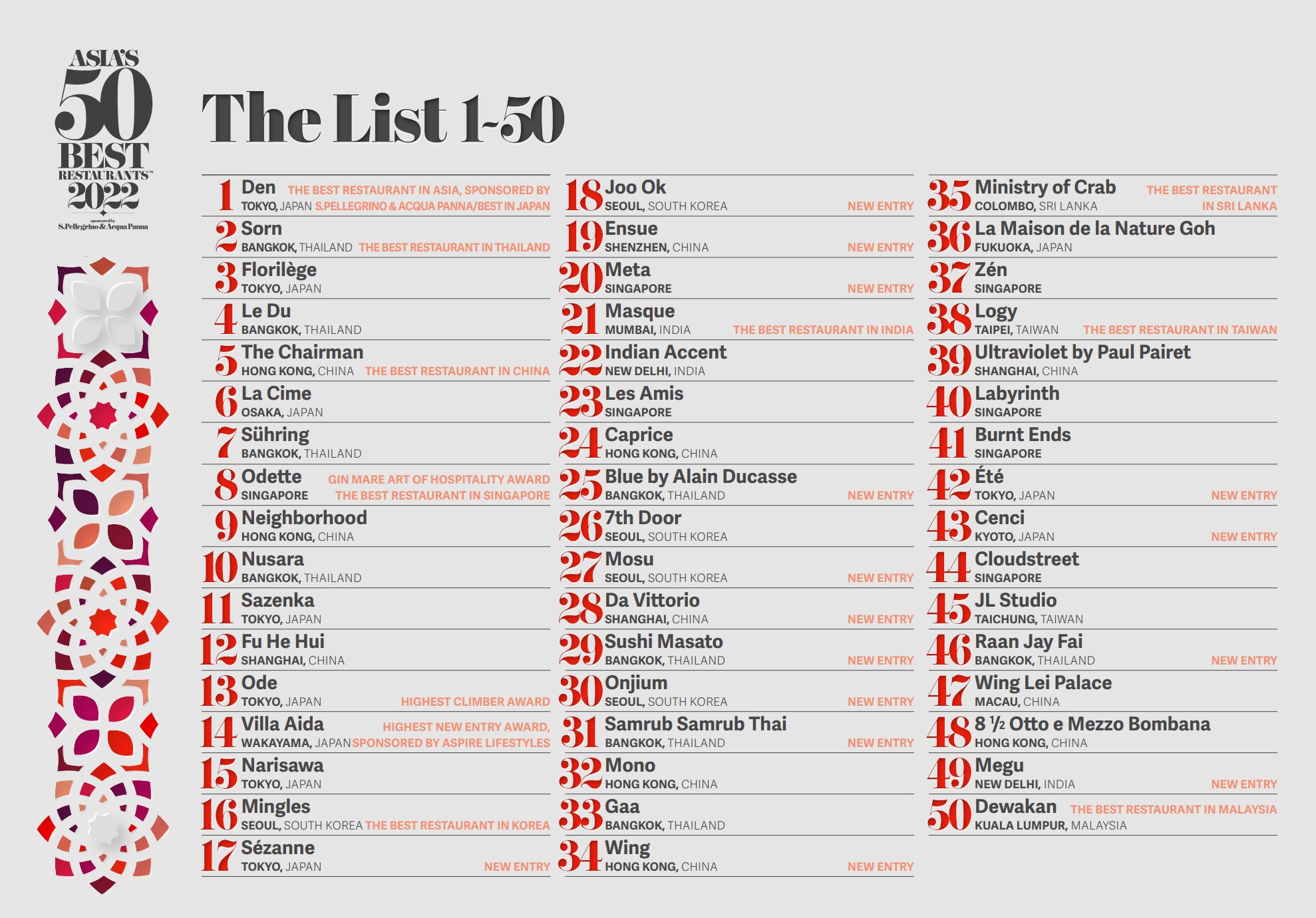The Evolution of Japanese Gastronomy and the Great Leap Forward. Let’s say “I’m home” to the world!
The awards ceremony which is referred to as the “Academy Awards of Gastronomy” took place on the following day of the U.S. Academy Awards ceremony. The stage was set in three cities: Bangkok, Macau and Tokyo. The Asia’s 50 Best Restaurants List was launched in 2013. This year marks the 10th anniversary year of the “Asia’s 50 Best Restaurants” event. Since the Covid-9 situations has improved somewhat compared to the past two years, the event was held in a larger venue for the first time in a while in multiple cities.
The sight of the star chefs wearing red stoles to identify themselves as award winners, and the glamorously dressed foodies and food journalists talking over glasses with excited looks on their faces, is fresh and strangely emotional after two years of closed doors. However, it was the reading of the 50 most popular restaurants in Asia that stirred the hearts of the visitors the most on this day. Restaurants from Japan made a great leap forward. “Den”, which has topped the list of “Asia’s 50 Best Restaurants” for the past several years, finally won the number one spot in Asia, a long-cherished wish after a decade of absence since “NARISAWA” won the first place title in 2013.
By knowing the individuality of the food competition,choosing a restaurant is more exciting
Let me briefly describe the “Asia’s 50 Best Restaurants. At the beginning of this article, I used the phrase “the Oscars of Gastronomy,” which I think is an apt description. The world’s top food competitions include Michelin, Gault & Millau, OAD, and Zagat Survey, among others, and when you add domestic evaluation sites such as “Tabelog”, there are literally hundreds of lists. Each has its own characteristics and style, so it is reasonable to assume that there is no such thing as the most equal or most reliable. The “World’s 50 Best Restaurants” was launched in the U.K. in 2002 and has come to be regarded as the twin of Michelin. Regional edition of the “World’s 50 Best Restaurants” started in Asia in 2013, followed by South America and Middle East & North Africa today.
The reason why it is said to be the twin of Michelin is largely because the restaurant evaluation systems are the exact opposite on both sides. For example, in the “Michelin” system, Michelin dispatches its employees as undercover evaluators to evaluate various restaurants, whereas in the “50 Best Restaurants” system, foodies such as chefs, journalists, and foodies appointed by the chairperson of each area’s board of trustees, work and vote as they wish without receiving any compensation. In other words, it is “eating with one’s own money,” but there is no end to the number of “voters,” or trustees, who are willing to take on this task (even though they are not allowed to reveal their identities) because of the love they have for the world of gastronomy. Voters travel not only in Japan but also abroad to visit the most talked-about restaurants and enjoy the world view that surrounds the cuisine. Rather than checking the taste and service, it is bliss to taste the atmosphere unique to the country, region, and restaurant where the chef and staff are working, and to feel what is being communicated. It is something like award-winning chefs expressing their emotions and thoughts on stage and on social networking sites.
We could foresee the results of the big change.
We should be confident of today’s list
Back to this year’s list. Takanori Nakamura, longtime chairman of the Japanese Council (chairman) of the “World’s 50 Best Restaurants,” had commented some interesting words just a week before the announcement by saying “I think there will probably be some changes in the rankings this time around. I also think that we can expect new entry restaurants. Not only in Japan, but in Asia as a whole.“
Nakamura is the chairman of the Japan Council and has the authority to appoint the 53 council members in the Japan region. However, even as Chairman of the Board of Trustees, he is not informed of the rankings until the moment of the announcement. It should be noted that this information is known only to the UK headquarters and the administrative offices in each country.
Nakamura continues to say, “The original rule for voting was that council members had 10 votes, of which a maximum of 6 could go to their own country. This time, due to the common worldwide situation of strict international travel restrictions due to Covid-19, the irregular rule was that councilors had 8 votes and were allowed to put a maximum of 6 votes for their own country and abstain from voting for the other countries.”
“This inevitably resulted in fewer votes for foreign restaurants than in previous years, and as a result, it is believed that all council members, including those from other countries, reviewed and voted for restaurants in their own areas of residence. Even countries that had government-wide promotions inviting food journalists from other countries would not have been able to do so in the last two years. While this may have been a blow to those restaurants that relied on inbound travel, we believe that this year is an opportunity for restaurants that are popular, competent, and have a large number of repeat customers.”
Japan secures record 11 entries including 4 newcomers
The results were close to Nakamura’s expectations. The details of the list are shown below. There are a few points worth noting.
11 restaurants from Japan made it into the top 50. Of these, 4 were new entrants, which had not been on the list until last year, and 8 of the 11 restaurants were in the top 20, which is also astounding.
But what was most impressive was the reclaiming of the No. 1 spot in Asia for “Den”, an honor that took 10 years to regain in Japan after being held by “NARISAWA” (No. 15 this year) in the first edition in 2013. “Florilége” (3rd place), “La Cime” (6th place), “Sazenka” (11th place), and “Ode” (Highest Climber Award) (13th place) all moved up in the rankings from last year, and Chef Daniel Calvert, who moved from his 25th-place position at “Belon” in Hong Kong last year, has since relocated to Tokyo, and his new restaurant “Sézanne”, which he now heads, has quickly climbed to 17th place.
3 restaurants that were not on the list last year but were recognized for their activities have also made the list this year. “Villa AiDA” (Wakayama) jumped from 64th place last year to 14th this year, winning the “Highest New Entry Award”. This award is given to the restaurant that achieved the highest ranking in its first appearance. “été” which ranked 83rd last year, came in 42nd place, and “Cenci,” (Kyoto) which ranked 91st, came in 43rd.
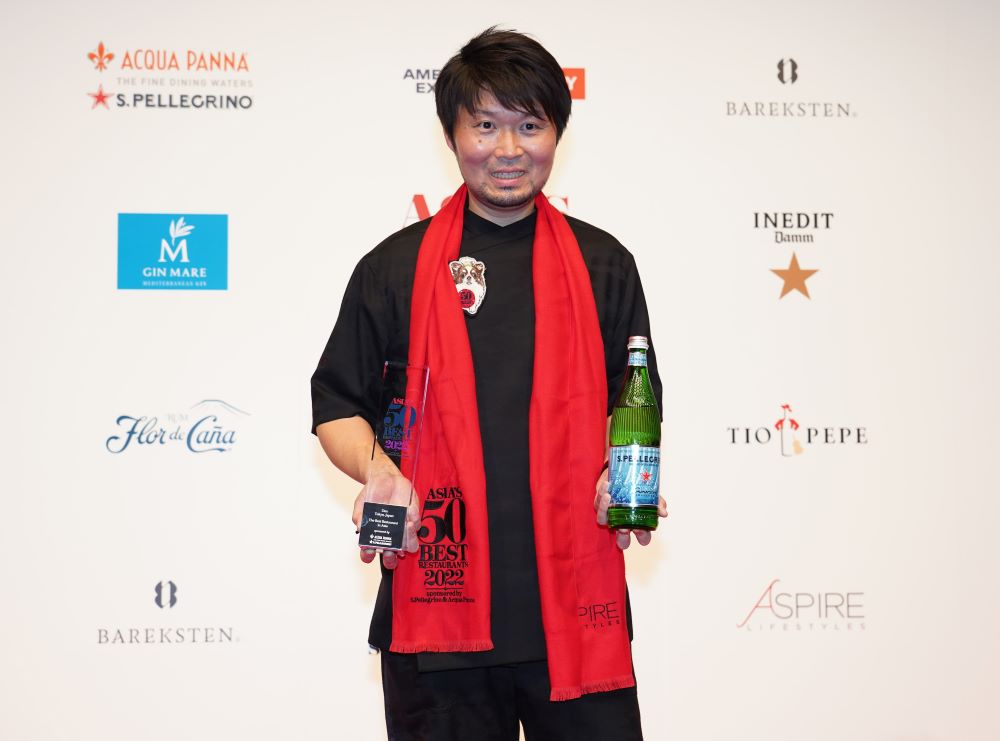

Zaiyu Hasegawa, chief chef of “Den”, expresses his delight on stage, having been ranked for the first time in 2016 and winning every category award the following year, including the “One to watch Award” in the “World’s 50 Best Restaurants” and the “Art of Hospitality Award” in both Asia and the world. The “Face of Japan” has finally obtained the last thing he hadn’t obtained.
By welcoming new power, the future of the restaurant is more expansive.
While we may be distracted by the glorious results, the speech by Zaiyu Hasegawa of “Den”, the restaurant that won the number one honor, revealed a much greater essence. With a hint of embarrassment after shedding a tear, Hasegawa began by talking about the culinary industry, not his own joy.
“At this moment, I still remembered the faces of everyone on the team. These are the people with whom I have had repeated discussions every day since the Covid-19 broke out, or even long before that, even though we have faced various challenges. This is not only true of “Den”, but I am sure that the chefs at other restaurants feel the same way. I know we are living in difficult times, but when we chefs get together, all we can talk about is the future of the restaurant. The fact that 4 new entry restaurants were ranked in the list is the best thing that could happen to the Japanese restaurant industry. I am sure that everyone who works in the restaurant industry, including myself, thinks that this kind of trend will eventually lead to more customers from all over the world visiting Japan in the future,” said Hasegawa.
The 3 newly ranked chefs also shared their thoughts on stage. Chef Natsuko Shoji stands out in a tight dress. Her performance this time was unprecedented in the world. The year before last, she won the “Asia’s Best Pastry Chef Award”, and this year she won the “Best Female Chef in Asia Award” as well. As far as Nakamura can remember, there has never been a person who has won awards as both a pastry chef and a chef. She has also been ranked in the top 50, making her a triple award-winning presence that is attracting a great deal of attention from the media both inside and outside of Japan.
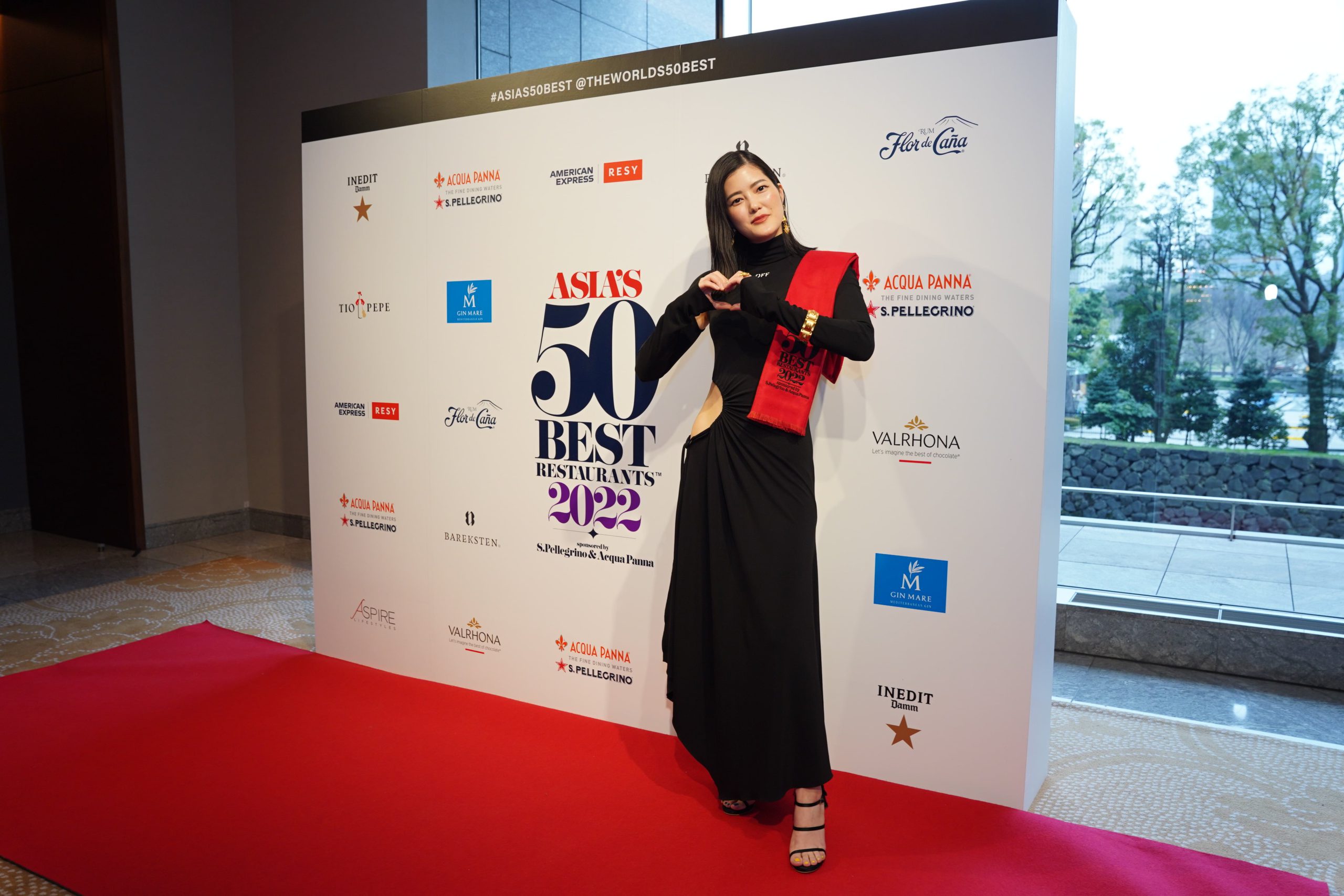

「été」chef Natsuko Shoji
“I have never liked the word “dream” for a long time. Because in my case, it was all goals, not dreams. But when I found out I had won the award, I couldn’t help but scream. ……The Best Female Chef Award was an award I wanted to win. We are a small restaurant with a limited number of customers, and we work hard with only female staff. Japan lags behind other developed countries in improving the status of women, but I believe that if more young women knew that there are people like me, there would be more young women who want to enter this world. I believe that is the meaning of my existence now, “ said Natsuko Shoji.
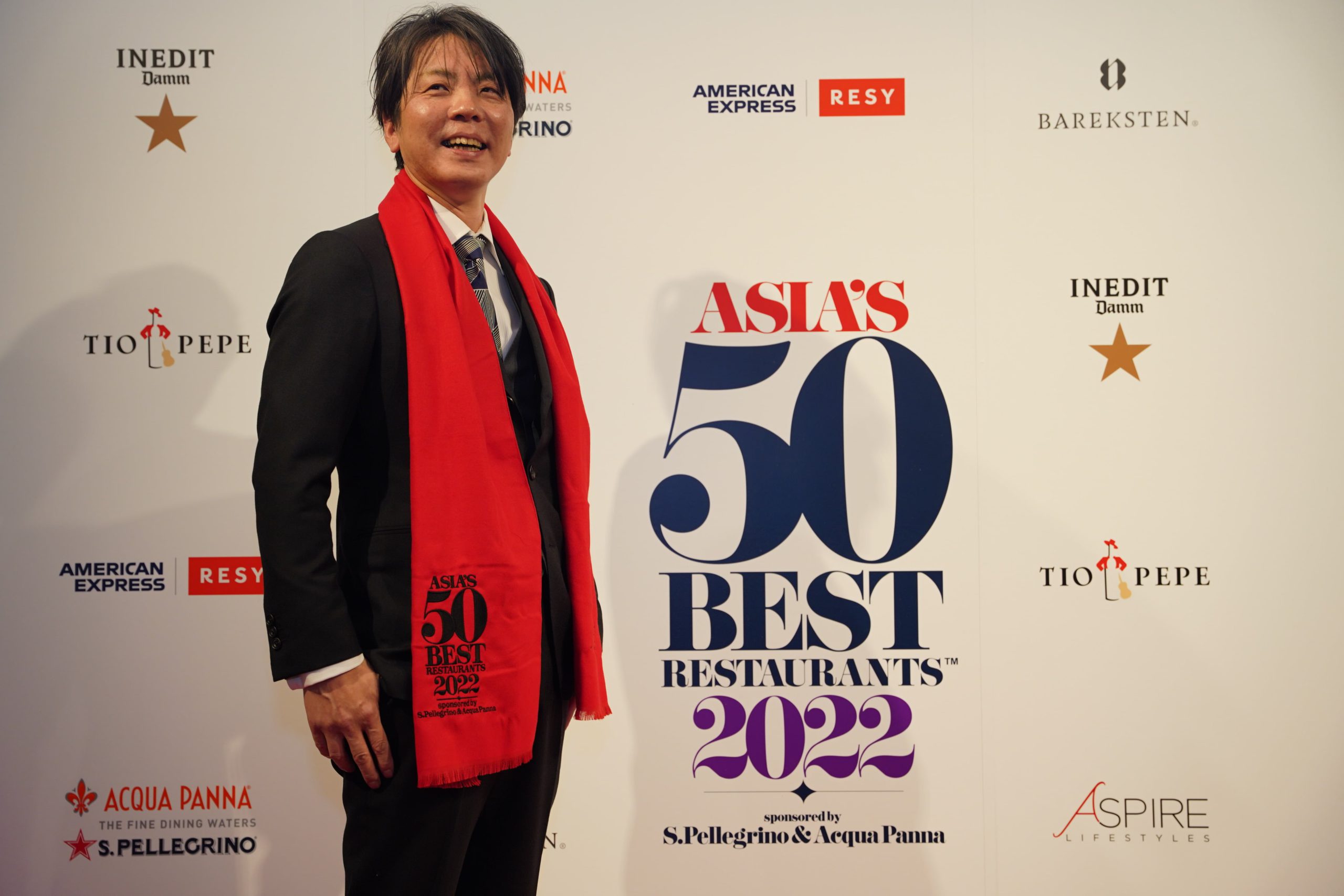

“Villa AiDA” chef Kanji Kobyashi
Gastronomy from local areas will be the common sense of the world.
Chef Sakamoto of “Cenci” and Chef Kobayashi of “Villa AiDA” have something in common. Sakamoto runs his restaurant in Kyoto and Kobayashi in Wakayama. Although the majority of the regular award winners were based in Tokyo, the 2 unique local restaurants made the list, following “La Maison de la Nature Goh (Fukuoka)” and “La Cime (Osaka)”. It seems a curious synchronization that both have moved up nearly 50 places from last year’s results. Kobayashi, who built a restaurant on his family’s farm in Iwade City, Wakayama Prefecture, and has been in business for 24 years this year, told us a story that was full of freshness despite his position as a career chef.
“I farm and cook. The restaurant is my home and I really live there. I’ve been asked about sustainability more and more lately, but I’m actually not very conscious of it myself. On the contrary, I used to try to do everything by myself, and as a result, I lost touch with local producers, and I made a choice to stop daring to do this, which is not good. …… It’s been 24 years of constant worry. There have been countless times when I wondered if this was the right thing to do, or if I should just quit. My friends here have kept me going,” said Kobayashi by almost bursting into tears in his speech. Now “Villa AiDA” is one of the most difficult places to make a reservation. He has proven that local restaurants are not necessarily at a disadvantage.
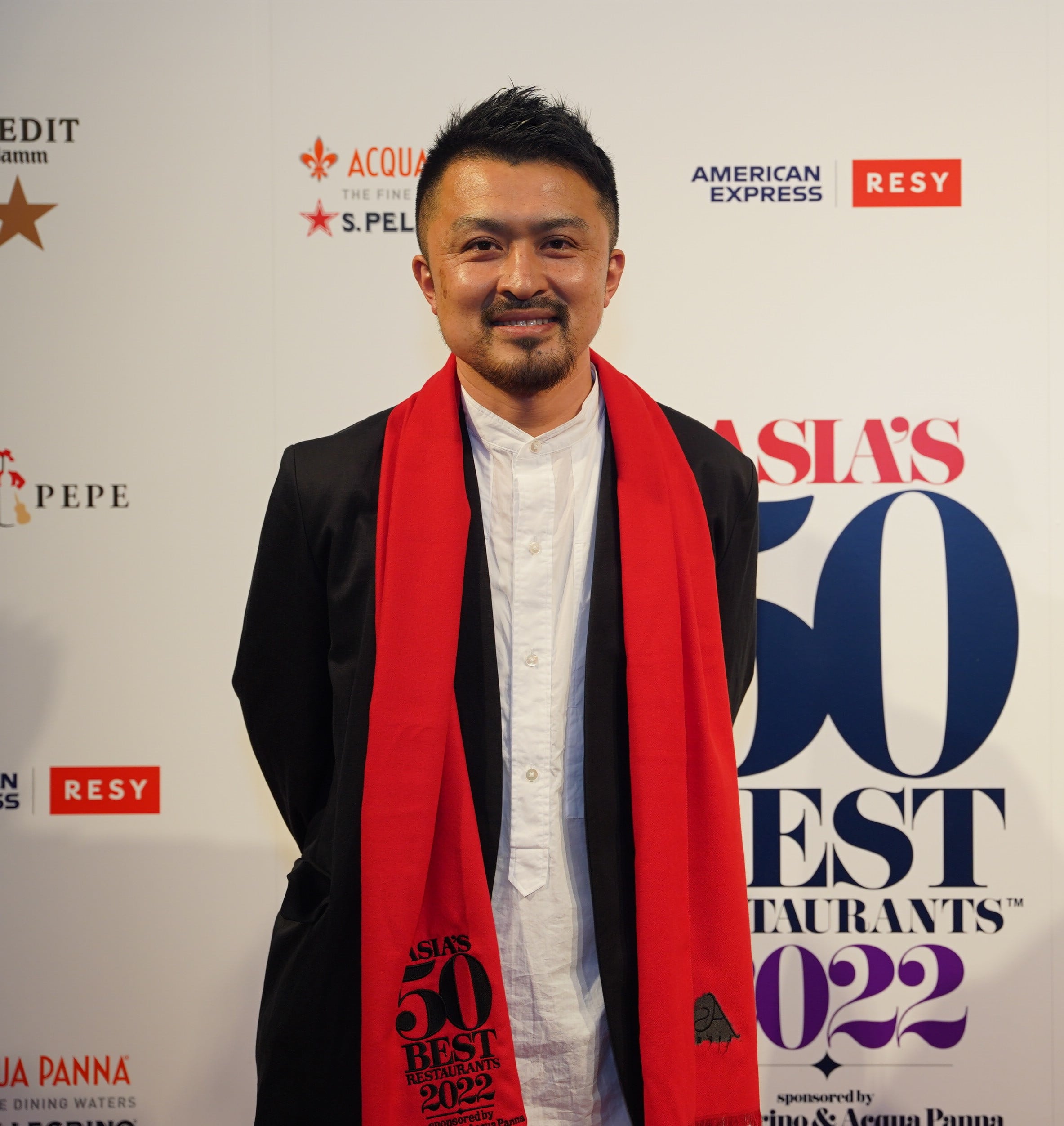

“Cenci” chef Ken Sakamoto
Meanwhile, Sakamoto points out what lies at the heart of “Asia’s 50 Best Restaurants by saying, “I have been paying attention to this competition for a long time, but I had the impression that it was more of a competition loved by closed-minded foodies around the world. But now that many popular restaurants are ranked in this way, I think it is a very good thing that the target audience has expanded from foodies to the general public who love good food. I also like the fact that the awards are given to restaurants rather than chefs. I would like the Best 50 Restaurants to be an entity that makes restaurants think seriously about how and what they can contribute to society and bring happiness to people.”
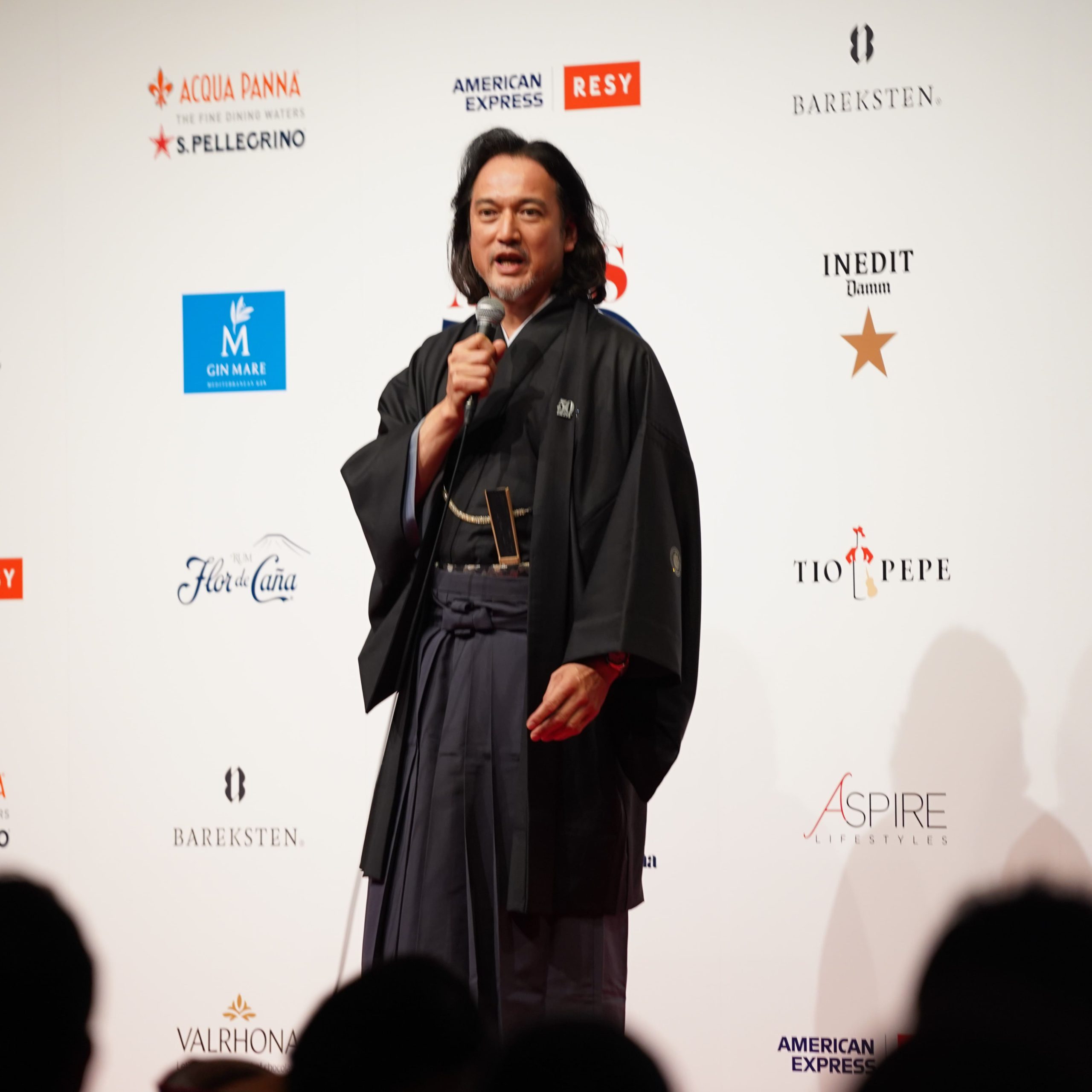

Takanori Nakamura serves as the head of the Japan Council of “Asia’s 50 Best Restaurants. Nakamura, who has been watching the world of gastronomy for a long time, says that the ordeal the restaurant industry has forced upon him over the past two years has been painful for him as well.
Gastronomy, turn the pride of Japan into a global one
Nakamura does not hesitate to hide his joy at seeing the results of the Japanese restaurants. Because this is the list that the staff and gastronomy fans who continued to support the “Asia’s 50 Best Restaurants” behind the scenes believed in, and it revives their confidence. This time, however, other countries have also shown suitably remarkable behavior.
“Raan Jay Fai (Bangkok), No. 46, is a street food restaurant with a female chef popular for her style of wearing a protective mask for her extremely spicy stir-fries. The Icon Award went to Jeong Kwan, a Korean nun, for her “fabulously spicy stir-fry.” She is a master of vegetarian cuisine and seems to preach a philosophy of cooking. In addition, the two chefs from Malaysia’s Eat and Cook, who won the “One to Watch Award,” were recognized for creating a local cuisine restaurant as a project after losing their jobs during the Corona disaster recession, a story that is unique today. That was the original aspect of this competition, but I don’t think there has ever been a ranking that made us feel the word “diversity” as much as this year,” Nakamura recalls.
Diversity, a willingness to continue to take on challenges, a never-ending questioning of society and expressing their superiority have been pursued by restaurants. But, this year’s Asia’s 50 Best Restaurants reminds us that the desire of all involved is to change the world through food. The global situation remains as unstable as ever, and new tragedies occur one after another. I realized that this time that there are so many people out there who are trying to solve these social problems through the wonderful means of gastronomy.
Photography by ©The World's 50 Best Restaurants
